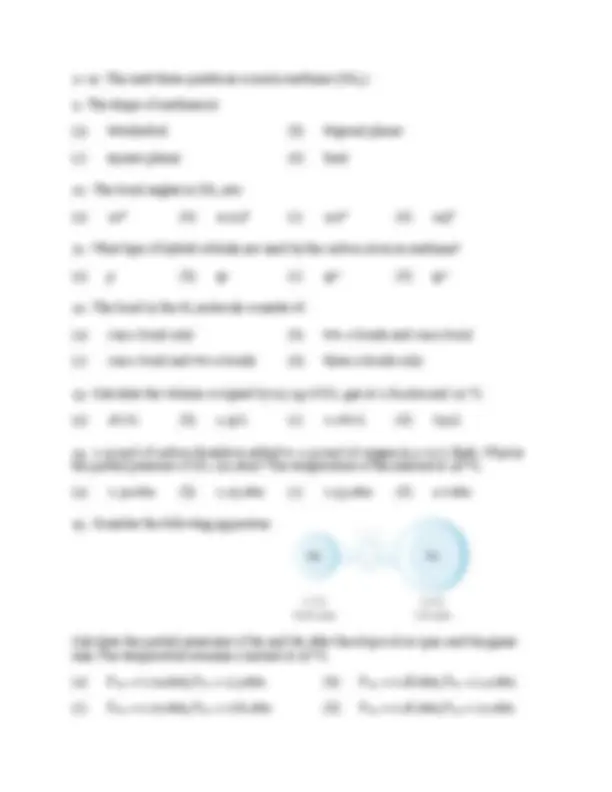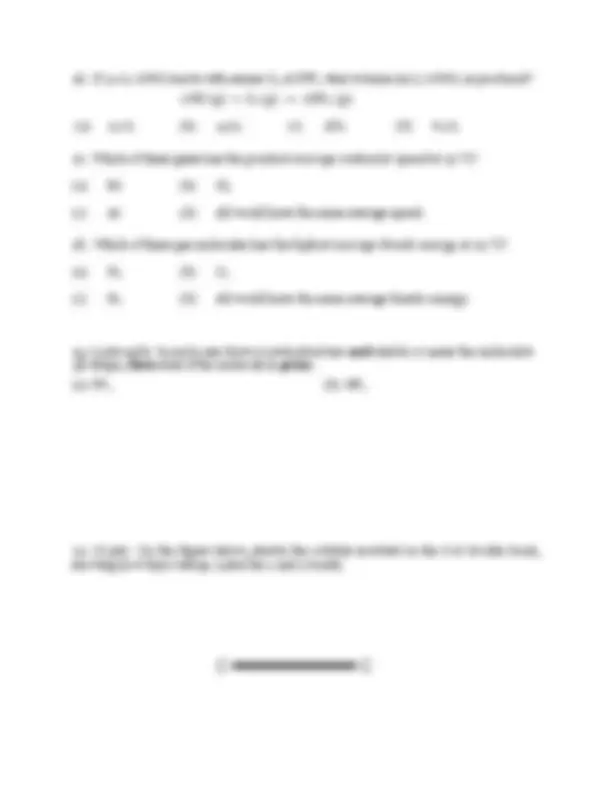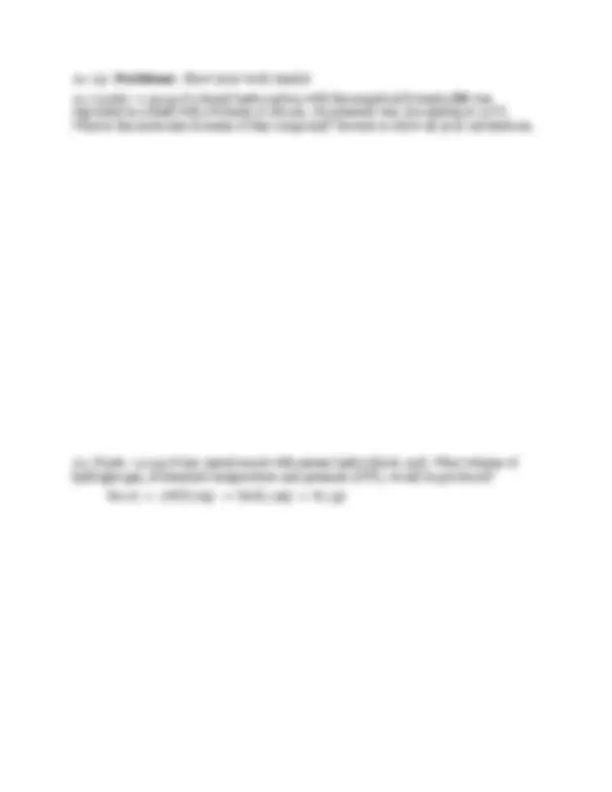





Study with the several resources on Docsity

Earn points by helping other students or get them with a premium plan


Prepare for your exams
Study with the several resources on Docsity

Earn points to download
Earn points by helping other students or get them with a premium plan
Community
Ask the community for help and clear up your study doubts
Discover the best universities in your country according to Docsity users
Free resources
Download our free guides on studying techniques, anxiety management strategies, and thesis advice from Docsity tutors
The third exam for the introductory college chemistry course, chem 151. The exam consists of 23 questions, including multiple choice questions and problems. Topics covered include ionic compounds, lewis structures, molecular shapes, hybrid orbitals, and bonding in diatomic molecules. Students are required to use the periodic table and show their work for problems.
Typology: Exams
1 / 7

This page cannot be seen from the preview
Don't miss anything!




23 questions on pages. DO NOT OPEN UNTIL INSTRUCTED TO DO SO
1 – 18 Multiple choice questions (3 pts each): Bubble in the correct answer on the Scantron.
If 9.0 L of NO reacts with excess O 2 at STP, what volume (in L) of NO 2 is produced? 2 NO ( g ) + O 2 ( g ) → 2 NO 2 ( g ) (a) 9.0 L (b) 4.5 L (c) 18 L (d) 6.2 L
Which of these gases has the greatest average molecular speed at 25 °C? (a) Kr (b) Cl 2 (c) Ar (d) All would have the same average speed.
Which of these gas molecules has the highest average kinetic energy at 25 °C? (a) H 2 (b) O 2 (c) N 2 (d) All would have the same average kinetic energy.
(5 pts each) In each case draw a Lewis structure and sketch or name the molecule’s 3D shape, then state if the molecule is polar. (a) PF 5 (b) NF 3
(6 pts) On the figure below, sketch the orbitals involved in the C=C double bond, showing how they overlap. Label the σ and π bonds.
21 – 23: Problems: Show your work clearly!
Equations and Constants: ∆ H^0 rxn = ∑ BE (reactants) – ∑ BE (products) Pressure units: 1 atm = 760 mmHg = 14.7 psi = 101325 Pa PV = nRT R = 0. Volume of 1 mol ideal gas at STP = 22.4 L KE = KE = €
RT u rms = €
rate 1 rate 2
P total = P 1 + P 2 +... + P n P 1 = χ 1 × Ptotal
L • atm mol• K